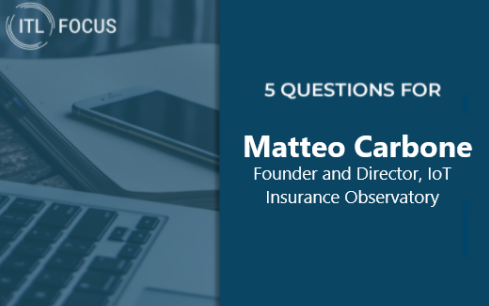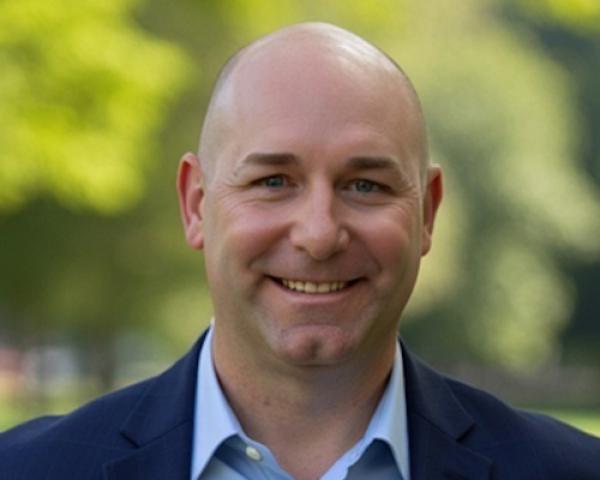For as much coverage and discussion as telematics has received over the past two decades, its impact on the auto insurance economy, including transportation, is going to be even greater and further reaching than many may have thought – it will be transformative in the fullest sense of the word.
Broadly defined as the digital exchange of vehicle and driving performance and status data among vehicles, smartphones and sensors of many kinds, telematics will enable and permanently change auto insurance products, pricing, distribution, public safety, alternative transportation, new products and revenue streams for all participants, including auto accident management, claims and repair process for ever-changing customer experiences. Insurance companies not already participating in this transformation will be hugely disadvantaged as telematics adoption grows beyond the tipping point.
Telematics is one of the most discussed insurtech innovations for both personal and commercial auto insurance. Insurance carriers enthusiastically promote the concept of using apps, windshield and plug-in devices in some combination to track driver behavior in exchange for discounts or pay-per-mile benefits. Behaviors such as acceleration and hard braking are combined with other data and rating variables to score and ultimately price insurance premiums.
Even though telematics has been in market since 2008, when Progressive Insurance introduced its innovative but slowly embraced Snapshot wireless device, only around 10% of all U.S. consumers have auto insurance using some form of telematics: pay-as or how you drive or other variations on that general theme.
The majority of consumers – between 60% and 70% – don’t know much about telematics-based auto insurance or outright resist the idea of their insurer monitoring their driving behavior, not to mention having concerns over sharing a range of other private information. While most drivers believe they have good driving skills, there is obvious hesitance in allowing insurers to “watch” closely. But this hesitancy is gradually dissolving as more pragmatic and transactional attitudes toward privacy evolve and as technology improves and expands; thus, Telematics 2.0 is on the rise.
Telematics 2.0: What’s Driving It?
There are several trends to consider beyond some of the more obvious factors that are attracting insurers, car manufacturers and drivers to telematics programs. Some of the trends we are observing that will shape and accelerate Telematics 2.0. are:
- rising crime rate (carjacking and gun crime) and speeding are increasing focus on personal safety and security while people are traveling away from home
- growing demand for fairness and equity by consumers and regulators; backlash against use of credit scores in pricing, viewed as unfair and discriminatory in some circles
- the dramatic drop in miles driven as a result of COVID-19 and the work-from-home (WFH) transformation; new commuting and transportation patterns have emerged
- increased capabilities and lower cost of technologies, including smartphones; 5G enables greater speed and functionality of over-the-air solutions
- OEMs embedding vehicle telematics and onboard connectivity
- growing consumer acceptance (especially aging Gen Z and Millennials) of consciously trading personal information and privacy for rewards and benefits
- desire for higher levels of safety and security (especially for households with driving-age children)
- emergence of inter-industry ecosystems and platforms that depend on real-time connectivity of devices
- accident frequency and severity and poor commercial auto lines performance, which demand changes
See also: ITL FOCUS: Telematics
Tomorrow’s Telematics: Features and Benefits
Telematics 2.0 has promise beyond discounts, offering emergency response, first response and roadside assistance. The OnStar model is being advanced through telecom Verizon’s Hum crash response alert system and recently announced plans by Apple to launch crash detection, which may auto-dial 911. There are several other such offerings involving insurance carrier apps, as well. Most promising could be an eventual transformation to today’s first notice of loss (FNOL) process, creating a real-time, automated first notice of incident or accident. All of these concepts are currently available, but, due to low telematics adoption, there are even lower volumes of claims use cases affected at this time. However, as more players enter the mix, consumers will expect their vehicles, telematics service or apps to auto-activate and initiate a claim and provide other services.
Other benefits of telematics programs coincide with advances in advanced driver-assist systems (ADAS), where both car and driver behavior improve simultaneously. Gamification and rewards can encourage safety and are already showing promise, for example by reducing distracted driving as auto insurance coverage evolves to become hyper-personalized and dynamic.
Commercial Auto Insurance in the New Economy
Shared mobility, which includes ride-sharing (e.g., Uber and Lyft) and car-sharing (e.g, Enterprise CarShare, Zipcar, Car2go, GIG, Turo and Getaround), relies heavily on telematics and is projected to continue to grow as vehicle ownership declines and socio-economic factors continue to change the mobility landscape.
The growth of small businesses began during and after the Great Recession of 2007-2009 and has continued to accelerate as corporate America adopted automation technologies and trimmed workforces to better compete. The pandemic fueled further growth in small business as WFH employment models fueled the Great Resignation and gig economy businesses emerged to meet new consumer demands for delivery and touchless services for everything. Telematics and connected devices are a key enabler of small business insurance products for fleet and delivery vehicle insurance, route optimization, asset management, driver safety and well-being and more.
Telematics Playing Field Is Expanding
Initially, telematics device manufacturers and solution providers enabled and supported the majority of telematics programs. Leading adopters were initially larger personal lines auto insurers such as Progressive that used vehicle telematics as a marketing and underwriting tool to attract new policyholders with safer driving profiles. In a few global markets, but excluding the U.S., carriers also used telematics in claims and fraud applications.
As telematics programs, including UBI (usage-based insurance), PAYD (pay-as-you-drive) and PHYD (pay-how-you-drive) proliferated and became “table stakes” for auto insurers – in spite of anemic adoption rates averaging between 5% and 7% – new intermediaries emerged to enable and support carrier programs. These included TSPs (telematics service providers) such as Octo, IMS, True Motion, Cambridge Mobile, Vitality Drive and the Floow. In addition, TDEs (telematics data exchanges) were introduced by large insurance industry information providers such as Verisk, LexisNexis Risk Solutions, CCC Intelligent Solutions and Arity, an Allstate company that offers driver behavior insights for tens of millions of drivers. These exchanges are essentially permission-based platforms connecting cars, drivers and auto insurers that share embedded and mobile vehicle telematics data in normalized format for use by auto insurers to provide usage-based insurance (UBI) programs and telematics-enabled claims capabilities.
New telematics technologies also appeared, supplanting the costly and unwieldy OBD (on-board diagnostic ) plug-in devices. These initially included smartphone solutions connected to vehicle OBD port data, which have now evolved to smartphone apps with and without on-board installed “tags” that improve information capture and accuracy. The recent acquisitions of True Motion by Cambridge Mobile Telematics (CMT) marked the beginning of a consolidation phase in telematics insurance and was quickly followed by Lemonade’s entry into the connected car insurance space, with its acquisition of Metromile.
Future of Connected Vehicle and Smart Mobility Infrastructure Is Here
The many evolutionary developments described above would be enough to transform any industry, but there are even more powerful forces emerging just now and approaching that are sure to turbo charge the entire process.
Consumer groups and state regulatory agencies in some jurisdictions are attacking the long-established auto insurer practice of using individual credit scores in pricing as unfair and discriminatory, and a call for an outright national ban could follow.
Telematics-based UBI and other models that depend on mobile telematics, real-time data and AI such as Loop insurance continue to emerge almost daily. And many of these products are segment-specific, such as Buckle, available only to rideshare and delivery drivers and HDVI, which focuses on small and midsize trucking fleets.
See also: Building Telematics Can Mitigate Risk
Smart city projects are emerging that deploy different types of digital and voice-activation technologies and sensors to collect and transmit specific data and will depend on V2V (vehicle-to-vehicle) and vehicle-to-infrastructure connectivity. President Biden’s infrastructure bill, which was just passed, will greatly expand smart city projects in applications such as broadband connectivity and other urban technology projects and a rapid expansion in connectivity, electric vehicle adoption, transit improvements and more.
Finally, autonomous (self-driving) vehicles are an inevitable reality as they evolve from Level 1 (least autonomous) to Level 5 (completely autonomous) and will accomplish a few things: convenience for operators/owners of vehicles, cost reduction for commercial vehicle operators (no driver) and safer roads (fewer and less severe crashes). Even at Level 1, these vehicles depend on over-the-air software updates, which will require high-speed connectivity, the very foundation of telematics programs.
These technology and connectivity enhancements are certain to permanently transform the nature of transportation, automobiles and auto insurance – and are poised to accelerate.



































